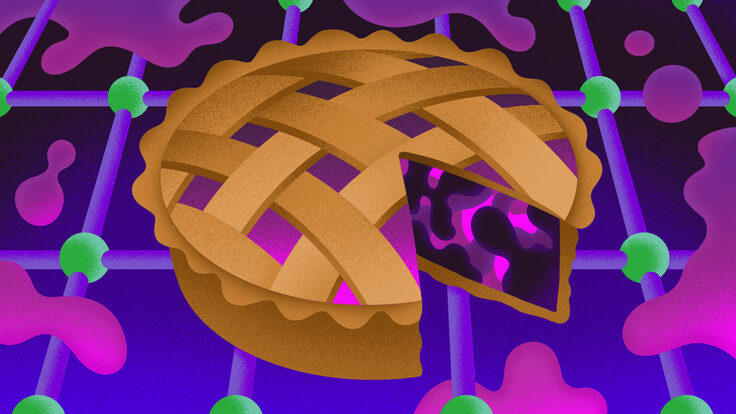Last week, Fermilab announced an improved measurement in the search for the Higgs boson. I thought that I’d give readers a sense of the big picture. Just how close are we to finding the Higgs boson if it exists?

This figure shows a combination of data from DZero and CDF. The area where the squiggly solid line crosses the horizontal line shows that we can rule out possible values for the Higgs boson mass. As we get more data, the squiggly lines will move downward.
First and foremost, to find the Higgs at the Tevatron would require combining DZero and CDF data into a single measurement. This effectively doubles the amount of data involved. To further understand the situation, we need to examine the figure above. Ordinarily I like to avoid such a technical plot, but it tells an important story. The solid, horizontal line shows the prediction for the Higgs boson according to the Standard Model. Our measurement is determined by how our data relates to this solid line.
The figure has two squiggly lines: one dotted and one solid. The dotted one is our prediction of what we expected to measure and it is surrounded by a bright green band. The band shows how certain we were in our prediction. The best way to interpret this is that the bright green region shows the area where we predicted our measurement should be somewhere in the bright green region.
However, a prediction isn’t a measurement. For the measurement, we turn our attention to the solid, squiggly line. This solid line tells us the maximum amount of Higgs boson production allowed by the data. For instance, if we look at a Higgs boson mass of 120 GeV, we see it crosses the line on the graph labeled by the big red number 2. This means that our data tells us we rule out producing Higgs bosons twice as often as predicted.
Where the squiggly solid line dips below the horizontal one is where we start to rule out the Standard Model Higgs boson. If our measurement indicates that the maximum-allowed Higgs boson production is below the prediction, then we can rule out this prediction. We see the light-green Tevatron exclusion regions where the solid line dips below the horizontal one.
Additional data will make the squiggly lines move downward. This will make wider the green regions currently between 100-109 GeV and 158-175 GeV. It is in these regions that we will most quickly discover or rule out the Higgs boson. Because the squiggly line is nearly flat from 120-150 GeV (and farthest from the horizontal line), it will still be quite some time before Tevatron data can rule out Higgs bosons in this mass range. Still, even in this difficult-to-exclude region, the data is very near the prediction. If the Higgs exists, the Tevatron is close to discovering or excluding it. The next year or two will be very interesting.
This story first appeared in Fermilab Today on August 5, 2010.






